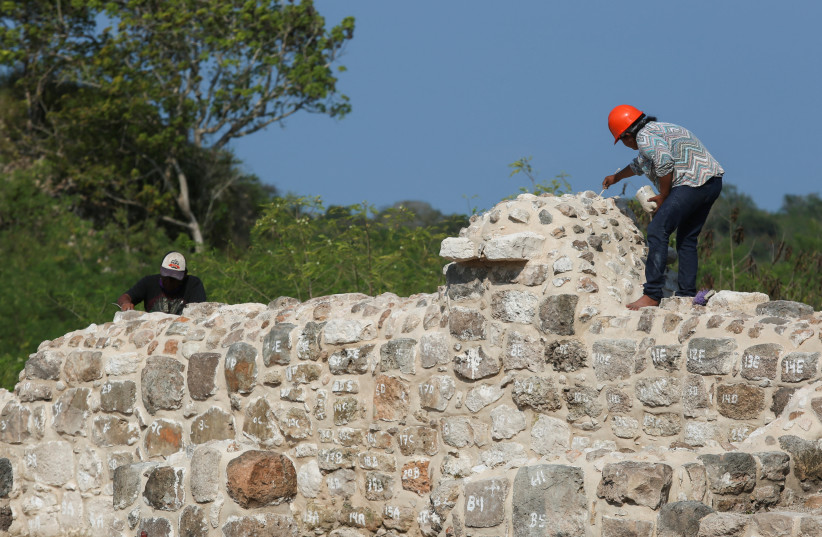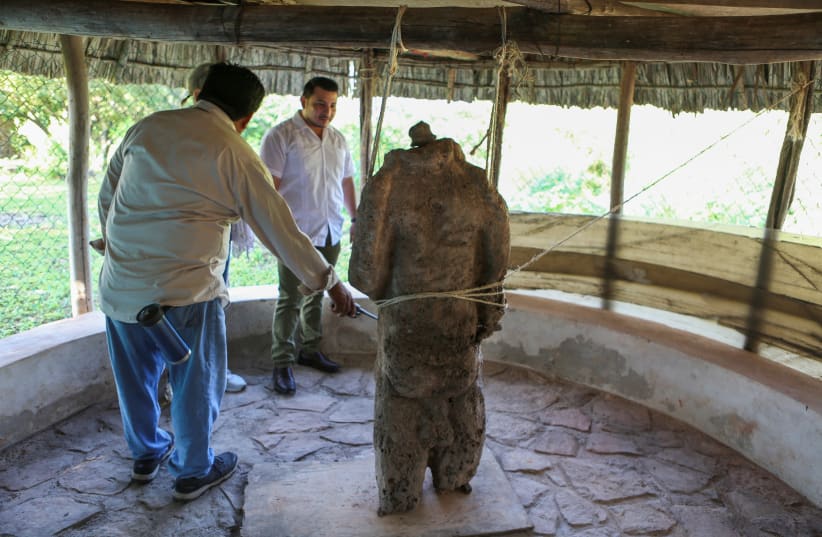A lifesize statue of a headless human was recently discovered in the ancient Maya city of Oxkintok, Mexico, during excavations led by the National Institute of Anthropology and History (INAH).
The limestone statue, which has no head, hands, lower legs or feet, is 5'5 in height and has been nicknamed "Yum keeb" - or the god of phallus and fertility.
The archeologists believe that the statue was made in the image of a Maya warrior, most likely a prisoner of war. According to INAH general director Diego Prieto, the lack of a head "surely represents a warrior who was a prisoner in combat."
He added that it was likely that the person represented by the statue had ultimately been decapitated after his capture.
Giving a media tour of the excavation site, archeologist Luis Pantoja Diaz explained further the significance of the discovery, saying "he was found lying on his back and represents the human figure. We see marked pectorals, the middle part that could be the hanging belly and the part of the member."


However, the information shared by the archeologists is tentative, not definitive, as there is a lot that is still unknown and Pantoja Diaz stressed that it's difficult to say anything with certainty at this stage.
The ancient city of Oxkintok
The ancient Maya city of Oxkintok is located on the northwestern tip of Mexico's Yucatán Peninsula, an area known for being rich in limestone but scarce of lakes.
Evidence at the site of the ancient city suggests that it was inhabited from the Late Preclassic through the Late Postclassic periods of Maya prehistory, but there is no evidence of any particular war or famine that caused the abandonment of the city in 1500AD.
The city served as a major hub in the Early Classic and Terminal Classic periods. During this time, residents built structures such as pyramids and created detailed hieroglyphics and iconography.
